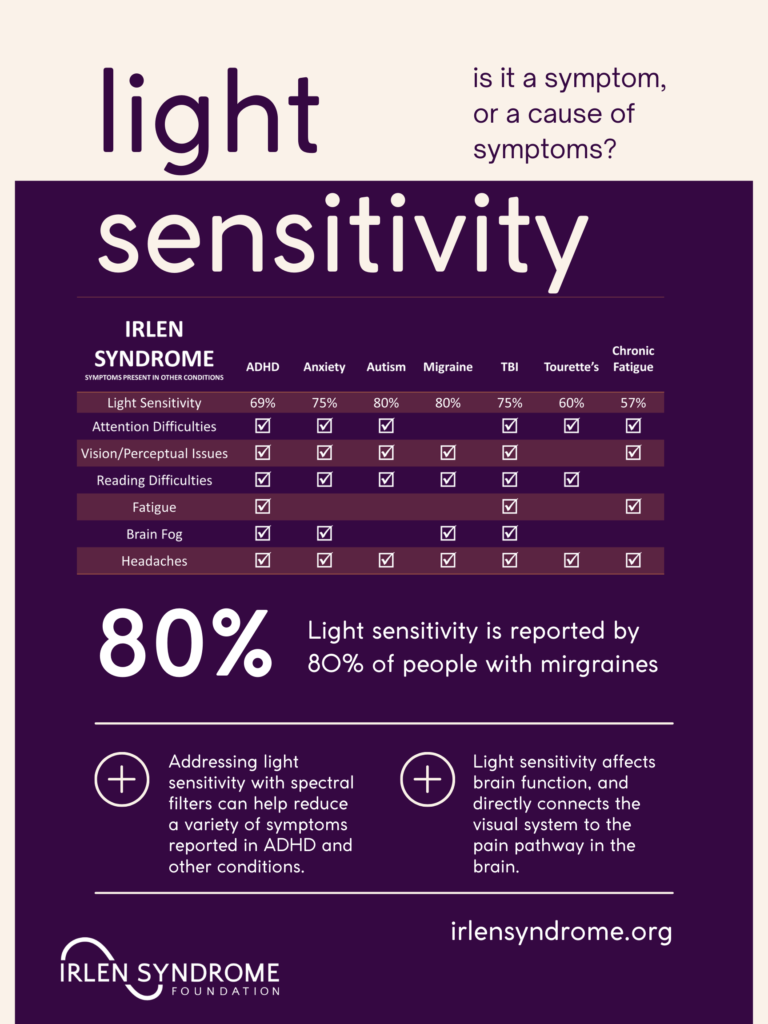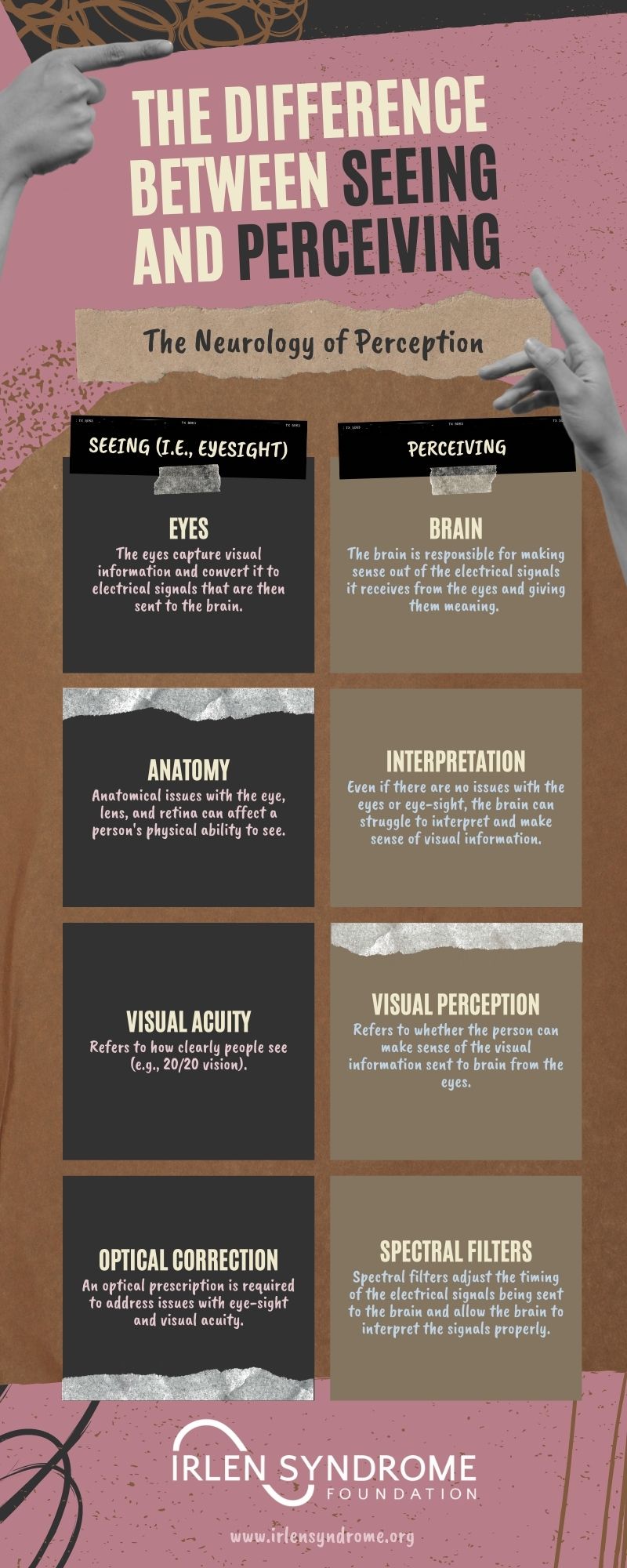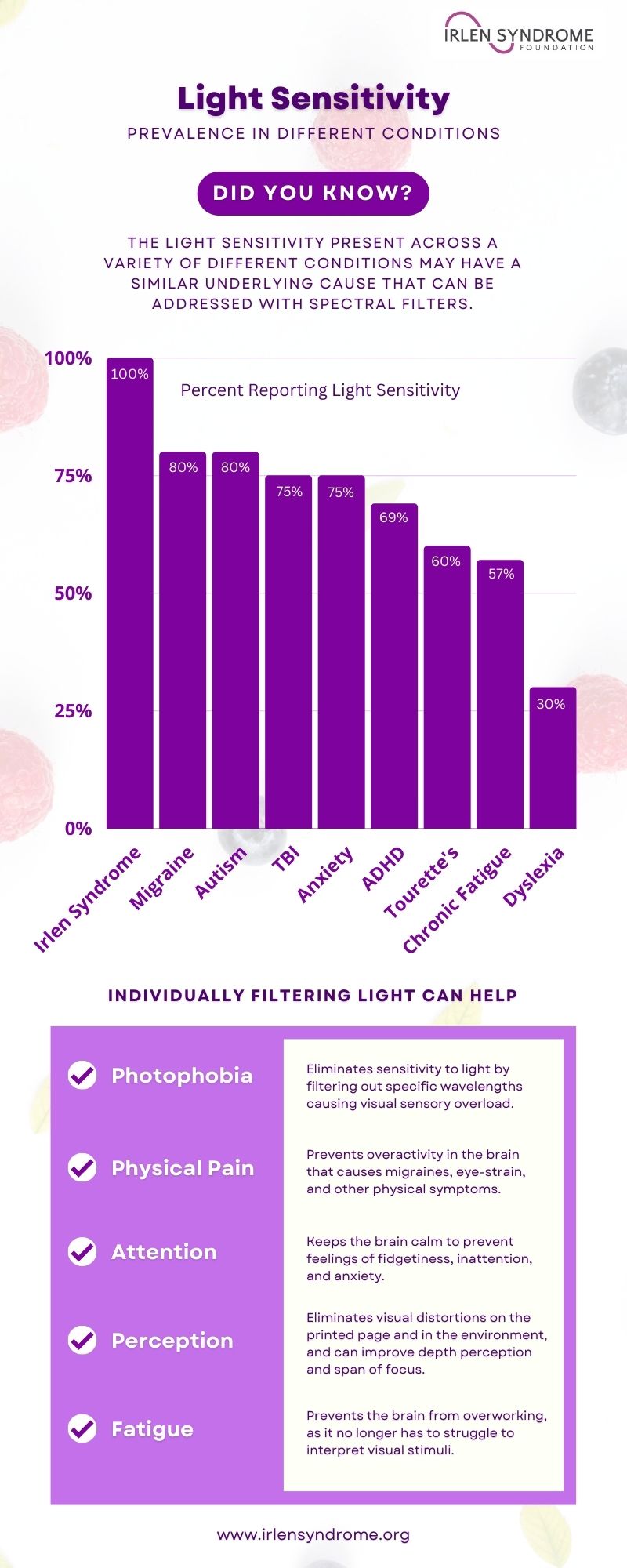Irlen Syndrome Explained: Understanding Irlen Syndrome, Dyslexia, & Meares-Irlen Syndrome
Welcome to an in-depth exploration of a commonly misunderstood visual processing condition known as Irlen Syndrome, also referred to as Meares-Irlen Syndrome. This article provides a comprehensive understanding of the syndrome’s relationship with dyslexia, delving into its symptoms, diagnosis, and potential remediation. Whether you are personally affected, a concerned family member, or an educational professional, our insight at Irlen.com aims to illuminate the complexities of Irlen Syndrome and offer clarity on its distinct identity within the spectrum of learning differences.
Understanding Irlen Syndrome: A Perceptual Processing Disorder Affecting Reading
Irlen Syndrome, also known as scotopic sensitivity syndrome or Meares-Irlen Syndrome, is a significant perceptual processing disorder. It affects the way individuals process visual information, particularly during reading. For those with Irlen Syndrome, the brain’s ability to understand and interpret visual data effectively is compromised, leading to difficulties with reading, and contributing to various reading disorders. Essentially, processing disorders like Irlen Syndrome impair the brain’s capacity to process visual input accurately. While reading, people affected by this condition face challenges when trying to process visual content on a deep level, resulting in reading problems that can significantly impact school performance.
Symptoms of Irlen Syndrome encompass a wide range of visual stress indicators. This stress can manifest when the eyes and brain work in unison to process visual cues, that others might perceive effortlessly. Because the visual system is overloaded, the overlays – which are colored filters designed to reduce visual stress – are frequently employed as a solution to alleviate symptoms of this syndrome. Visual stress is often relieved when overlays or tinted lenses are used, making the reading process more manageable for individuals with Irlen Syndrome. These interventions enhance the brain’s ability to interpret words on a page and facilitate the complex process involved in visual processing.
Irlen Syndrome and dyslexia are commonly associated; however, they are distinct conditions. While dyslexia primarily concerns a difficulty with language processing, Irlen Syndrome primarily affects how visual information is perceived. It’s crucial to note that though both disorders can co-exist, they require distinctly different treatments. The reading problems caused by Irlen Syndrome can be mitigated with visual aids, while dyslexia typically needs language-centered educational approaches. In many ways, these treatments enable affected individuals to overcome the barriers they face in processing visual content.
Within the context of Irlen Syndrome, the term ‘syndrome’ denotes a specific set of symptoms; these symptoms disrupt the ability to process visual information. This discrepancy often arises when the words on a page appear distorted, blurry, or even move, which can be incredibly disorienting for people coping with this condition. Such visual perception issues can result in individuals with Irlen Syndrome experiencing significant discomfort and frustration, especially in school environments where reading is a central activity. It’s also important to note that visual symptoms are not limited to academic settings and can appear in other areas of life as well.
The Irlen Method offers non-invasive solutions that tailor to the unique color spectrum each person with this condition requires to reduce visual processing issues. By employing precise colors, the overlays facilitate the brain’s ability to process visual data more smoothly. Irlen.com is a dedicated resource, helping to provide further understanding and solutions for those living with Irlen Syndrome. With proper diagnosis and remediation, many of the individuals affected by this processing disorder can significantly improve their reading capabilities and overall quality of life.
Identifying Irlen Syndrome Symptoms and the Impact on Processing Visual Information
Irlen syndrome, a distinct type of perceptual processing disorder, manifests with a variety of symptoms that can severely impact an individual’s ability to process visual information. At the core of Irlen syndrome is a sensitivity to visual stimuli, which contributes to a range of visual stress-related issues. Individuals with this condition may report problems with reading, where words may appear to distort, blur, or move on the page, causing significant stress and hindering their reading fluency. This isn’t solely about the clarity of the visual information but the brain’s capacity to interpret what the eyes perceive.
Typically, these symptoms may lead a person to struggle with day-to-day tasks that most take for granted. The unique visual stress that accompanies Irlen syndrome can result in a specific set of challenges; from difficulty with sustained reading to being overwhelmed by bright lights or busy patterns. These symptoms are not to be confused with those of dyslexia, although they may coexist, leading to a compounded processing disorder which impacts reading proficiency even further.
When processing visual information, a person with Irlen syndrome experiences the world differently. The brain’s inability to process specific wavelengths of light efficiently can make an individual susceptible to visual stress. This heightened stress can translate into headaches, fatigue, and other physical symptoms after exposure to certain visual triggers. Meares-Irlen Syndrome – another name for Irlen syndrome – underscores the relationship between visual processing problems and a spectrum of reading difficulties.
To provide effective relief, a thorough understanding of the symptoms is essential. These symptoms can impede a person’s academic and professional progression. In a learning environment, a child with Irlen syndrome might find it difficult to concentrate on text, causing them to fall behind their peers. The clarity and steadiness of visual information are sporadic, leading to erroneous perception of words and affecting reading comprehension.
One cannot overstate the importance of recognizing Irlen syndrome as a valid and significant condition requiring attention. The repetitive use of the term ‘problems’ highlights the numerous hurdles faced by those with this brain-based condition. Therefore, interventions like colour-tinted filters provided by qualified Irlen.com diagnosticians become invaluable. Such intervention can alleviate a great deal of the visual stress and symptomatology experienced by individuals with this syndrome, paving the way for a better understanding and interaction with the visual world.
Addressing the challenges posed by Irlen syndrome is not only about improving the person’s reading ability but also enhancing their overall quality of life. With proper recognition and intervention, individuals who have lived with undiagnosed visual processing disorders can begin to unlock their true potential. Through strategic interventions, we can quell the visual stress that has masked their capabilities, helping their brain to process visual information more comfortably and accurately.
Exploring the Relationship Between Irlen Syndrome and Dyslexia
Understanding the intricate connection between Irlen syndrome and dyslexia is paramount for educators, parents, and healthcare professionals who seek to support individuals facing reading and language difficulties. Irlen syndrome, also known as Meares-Irlen syndrome, is a perceptual processing disorder that fundamentally affects how visual information is decoded by the brain. While dyslexia primarily pertains to a language-based learning disability, it is critical to recognize that reading problems aren’t merely linguistic but also visual. People with Irlen syndrome experience issues with processing the text, leading to symptoms such as strain, headaches, and distortions when exposed to certain visual patterns. These symptoms can exacerbate the challenges faced by children and adults with dyslexia, creating an overlap between these two conditions.
The visual processing problems experienced by those with Meares-Irlen Syndrome can manifest in difficulties with spelling, tracking across the lines of text, and general discomfort when reading. In schools, it’s not uncommon to encounter children who struggle with both the visual symptoms of Irlen syndrome and the language-related difficulties associated with dyslexia. Irlen.com provides a wealth of information on how specialized Irlen lenses can alleviate many of the symptoms caused by this processing disorder by filtering out the problematic wavelengths of light. These lenses are personalized and can significantly improve the reading experience and performance of affected individuals.
It’s crucial to acknowledge the unique experiences of people with these processing disorders, as they often endure a range of problems that can affect their academic and everyday tasks. Symptoms such as headaches, eye strain, and issues with depth perception can present significant barriers to learning. Further, there may be problems with attention span and concentration when the brain is inundated with visual stimuli it struggles to interpret correctly. In tackling these conditions, identifying the correct interventions for individuals who exhibit symptoms of both Irlen syndrome and dyslexia is vital. Such interventions can consist of the use of Irlen lenses, tailored reading programs, and accommodations in testing and classroom environments.
By considering the symptoms and effects of Irlen syndrome alongside those of dyslexia, practitioners can develop more nuanced strategies to support individuals in school and in life. The subjective nature of these conditions calls for a personalized approach, recognizing that while the symptoms may commonly co-occur, every person’s experience is distinct. For those affected by visual processing problems and language-based challenges, recognizing the symptoms early can make a significant difference in managing the conditions. With the right support, including resources from Irlen.com and the expertise of Irlen-certified diagnosticians, children and people of all ages can learn strategies to cope with their symptoms and improve their reading abilities, bolstering their confidence and learning potential.
- Both Irlen Syndrome and Dyslexia can affect reading abilities.
- Individuals with either condition often experience difficulty with tracking while reading, resulting in skipping lines or losing their place.
- Both conditions can lead to reading fatigue, causing discomfort or headaches after short periods of reading.
- People with Irlen Syndrome or Dyslexia may exhibit a similar avoidance of reading tasks due to the challenges faced.
- Both Dyslexia and Irlen Syndrome can lead to poor spelling as the individual struggles to process written information.
- In both cases, individuals might have normal or above-average intelligence, and their reading difficulties are not indicative of their overall cognitive abilities.
- Both conditions are often misunderstood or go undiagnosed, causing disruptions in academic and professional settings.
- Those with Irlen Syndrome and Dyslexia might benefit from similar accommodations, such as extra time on tests or assignments involving reading.
- Both can have a genetic component, meaning they may be more prevalent in individuals with a family history of the conditions.
- People with Dyslexia and Irlen Syndrome can experience difficulties with written language, not just with reading text but also with writing and copying text.
How You Can Test for Irlen Syndrome and Strategies to Help
Irlen Syndrome, also known as Meares-Irlen Syndrome or Scotopic Sensitivity Syndrome, is a condition that can significantly impact a person’s ability to process visual information, leading to issues with reading, spelling, and other academic challenges. Testing for Irlen Syndrome is the first step towards finding effective strategies to help those affected. Irlen.com is a resource for understanding this condition and offers guidance on how to proceed with testing. It’s crucial for individuals, both adults and children who experience visual stress, to undergo a screening to rule out or confirm the presence of this processing disorder.
The symptoms of Irlen Syndrome can often be confused with other learning disabilities such as dyslexia, but it’s important to note that they are distinct conditions, although they may coexist. People dealing with Irlen Syndrome might experience difficulties with words seeming to move on a page when they read, or they might become easily fatigued while reading. Testing for Irlen Syndrome usually involves a comprehensive evaluation by an Irlen-certified diagnostician found Internationally. This test will assess how a person’s brain processes visual information, and whether coloured overlays or Irlen lenses can alleviate the visual stress they face.
Strategies to help manage Irlen Syndrome may include the use of these specialized Irlen lenses or coloured overlays, which are designed based on the unique needs of each individual. Lenses can be fine-tuned to address the specific colours that improve a one-on-one’s visual experience. This personalization is essential as it ensures the individual can see more clearly and effectively, reducing problems with reading and other activities that involve visual processing. Schools are increasingly becoming aware of this condition and are often willing to provide advice and accommodations for children diagnosed with Irlen Syndrome.
For those seeking advice on Irlen Syndrome, October, November, and July are particularly beneficial times to reach out to clinics, as there is a heightened focus on raising awareness during these months. While the condition is not limited by season, scheduling a test during these periods may offer additional resources and support. Once a person has been diagnosed with Irlen Syndrome, they will better understand how their brain and eyes interact, leading to an enhanced ability to read and process visual information without the previous strain.
Remember, Irlen Syndrome is not a one-size-fits-all condition and can manifest differently in different people. If you or someone you know is experiencing problems with processing visual stimuli, it’s important to recognize that help is available. Visit Irlen.com for information on symptoms, solutions, and to find a local Irlen clinic. Whether you’re looking for strategies to help yourself or advice for a loved one, knowledge and support are paramount in managing this condition.
In conclusion, Irlen Syndrome is a perceptual processing disorder that often coexists with dyslexia and is sometimes referred to as Meares-Irlen Syndrome. Understanding the signs and obtaining a proper diagnosis can lead to effective intervention, such as the use of Irlen.com’s tailored spectral filters, to mitigate its impact on reading and daily activities. Irlen-certified diagnosticians play a crucial role in identifying the syndrome and assisting individuals in improving their quality of life. By increasing awareness and promoting accessible solutions, we can support those affected and foster a better understanding of this condition.
Q: What is Irlen Syndrome and how does it differ from dyslexia?
A: Irlen Syndrome, also known as Meares-Irlen Syndrome or Scotopic Sensitivity Syndrome, is a perceptual processing disorder that affects how the brain processes visual information, particularly during reading. This can lead to a range of difficulties, such as distortion, blurring, or movement of text on a page. Unlike dyslexia, which is primarily a language processing difficulty, Irlen Syndrome affects visual perception. Although they can co-exist, each condition requires different treatments, with Irlen Syndrome often being helped by visual aids like colored overlays or tinted lenses.
Q: What are the symptoms of Irlen Syndrome?
A: Symptoms include visual stress when reading or processing visual information, such as fatigue, headaches, difficulty with sustained reading, being overwhelmed by bright lights or busy patterns, and issues with depth perception. Additionally, individuals may experience strain, issues with spelling, and problems tracking across lines of text, which can lead to academic challenges.
Q: How is Irlen Syndrome diagnosed?
A: Diagnosis typically involves a comprehensive evaluation by an Irlen-certified diagnostician, which assesses how a person processes visual information and whether they can benefit from colored overlays or Irlen lenses to reduce visual stress. Screening is vital for those experiencing symptoms of visual stress to confirm the presence of the disorder.
Q: Can Irlen Syndrome be treated and how?
A: Yes, Irlen Syndrome can be effectively managed with personalized interventions. Intervention includes the use of color-tinted Irlen filters or overlays that help individuals process visual information comfortably. These aids are tailored to the unique color spectrum needed for each person to improve their reading capabilities and reduce visual processing issues.
Q: Where can I find more information or get help for Irlen Syndrome?
A: Irlen.com is a comprehensive resource that provides information on symptoms, diagnosis, and personalized solutions for Irlen Syndrome. The website also helps you locate Irlen-certified diagnosticians and clinics where you can get tested and treated for the condition. By understanding the syndrome and utilizing the right support, individuals can improve their quality of life and academic performance.
Q: Are there specific times when seeking advice on Irlen Syndrome is recommended?
A: You can seek advice on Irlen Syndrome at any time. It’s never too late to be screened or get help.





